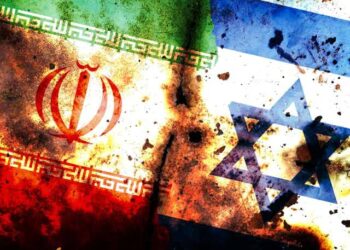The serene valley of Kashmir was shaken by a brutal terror attack in Pahalgam, a picturesque hill station known for its breathtaking landscapes and tranquil ambiance.
This terror attack not only disrupted the peace but also left an indelible mark on the region’s history.

The significance of Phalgam, a favorite among tourists, was overshadowed by the tragic events that unfolded, leaving a scar on the community.
Key Takeaways
- The Pahalgam terror attack was a significant incident in Kashmir’s recent history.
- Phalgam is a popular tourist destination known for its natural beauty.
- The attack had a profound impact on the local community and tourism.
- The incident highlighted the ongoing terrorism issues in the region.
- The response to the attack was crucial in maintaining order.
The Tragic Events Unfold in Pahalgam
The serene landscape of Pahalgam was marred by a brutal terrorist attack, leaving a trail of destruction and chaos in its wake. This tragic event not only shocked the local population but also sent ripples across the nation.
Timeline of the Attack
The attack unfolded in a series of coordinated strikes, beginning at approximately 9:00 AM local time. Here’s a breakdown of the key events:
| Time | Event |
|---|---|
| 9:00 AM | Initial attack on the tourist site |
| 9:15 AM | Security forces respond to the attack |
| 9:30 AM | First reports emerge of casualties |
| 10:00 AM | Evacuation of tourists and locals begins |
Initial Reports and Confusion
Initial reports were fragmented and often contradictory, with some sources indicating a higher number of casualties than others. The confusion was compounded by the remote location of Pahalgam, making it difficult for news to spread quickly.
As the situation developed, official statements began to clarify the extent of the damage, providing a more accurate picture of the events.
First Responder Accounts
First responders, including local police and emergency medical services, were quick to react to the crisis. Their accounts provide a harrowing insight into the chaos and the challenges faced during the response efforts.
A local police officer recounted: “We received the distress call at 9:10 AM and immediately rushed to the scene. The attackers had already inflicted significant harm, and our priority was to secure the area and evacuate the injured.”
Paradise Shattered: Understanding Pahalgam’s Significance
The beauty of Pahalgam, a jewel in Kashmir’s tourism crown, was marred by an act of violence that shattered the tranquility. Pahalgam, known for its picturesque landscapes and serene environment, attracts tourists from all over the world.
Pahalgam as Kashmir’s Tourist Jewel
Pahalgam’s significance in Kashmir’s tourism cannot be overstated. Its lush green meadows, horse riding trails, and the tranquil Lidder River make it an ideal destination for nature lovers and adventure seekers alike. The town is a crucial part of Kashmir’s tourism industry, contributing significantly to the local economy.

The Contrast of Beauty and Violence
The terror attack in Pahalgam starkly highlighted the contrast between the region’s natural beauty and the violence that sometimes erupts. The attack not only harmed the local community but also impacted the tourism industry, causing concern among travelers and locals alike. Understanding this contrast is crucial to grasping the complexities of the region and the challenges it faces in maintaining peace and promoting tourism.
The incident underscores the need for robust security measures to protect tourist destinations like Phalgam, ensuring that their beauty and tranquility are preserved for future generations.
Immediate Aftermath: Chaos and Response
The immediate aftermath of the Pahalgam terror attack was marked by chaos and a swift response from emergency services and security forces. As the situation unfolded, the primary focus was on saving lives and securing the area.
Emergency Services Mobilization
Emergency services were quickly mobilized to the scene, with rescue teams and medical personnel rushing to assist those affected by the attack. The rapid response helped in minimizing casualties and providing timely medical care to those in need.
The emergency responders worked tirelessly to rescue individuals trapped in the debris, using specialized equipment to navigate through the challenging terrain. Their efforts were crucial in the initial hours following the attack.
Security Forces’ Initial Actions
Security forces took immediate action to secure the area and prevent further attacks. They cordoned off the site, conducted thorough searches, and deployed additional personnel to the region to enhance security.
“The swift action by security forces was critical in preventing the situation from escalating further and ensuring the safety of the rescue teams.”
Senior Security Official
Evacuation and Securing the Area
The evacuation process was carried out with utmost urgency, with efforts focused on safely relocating individuals from the affected area to secure locations. Security forces worked in coordination with local authorities to ensure a smooth evacuation process.
| Response Measure | Description | Outcome |
|---|---|---|
| Emergency Services Mobilization | Rapid deployment of rescue teams and medical personnel | Minimized casualties and provided timely medical care |
| Security Forces’ Actions | Securing the area and preventing further attacks | Prevented escalation and ensured rescue team safety |
| Evacuation Process | Safely relocating individuals from the affected area | Successfully evacuated people to secure locations |
In the aftermath of the Pahalgam terror attack, the coordinated response from emergency services and security forces played a vital role in managing the crisis and mitigating its impact.
The Victims: Lives Lost and Forever Changed
Amidst the beauty of Kashmir, the Pahalgam terror attack brought forth a grim reality. The valley, known for its serene landscapes and vibrant culture, was shaken to its core as innocent lives were lost and families were torn apart.
Profiles of Those Lost
The victims of the Pahalgam terror attack came from diverse backgrounds, each with their own story. Among them were young tourists eager to explore the beauty of Kashmir, local guides who had spent their lives in the valley, and families who had traveled to Pahalgam for a peaceful vacation.
Some of the notable victims include:
| Name | Age | Background |
|---|---|---|
| Rahul Sharma | 28 | Tourist from Delhi |
| Aisha Khan | 32 | Local Guide |
| Mohammed Ali | 45 | Businessman from Srinagar |
Survivors’ Accounts
Survivors of the attack shared harrowing tales of their experiences, highlighting the trauma and resilience in the face of terror. One survivor recalled,
“I was in shock, unable to comprehend the scale of the violence around me. It was like a nightmare that I couldn’t wake up from.”

Impact on Families and Communities
The impact of the attack was not limited to the immediate victims; it rippled through families and communities, leaving a lasting scar. Families lost loved ones, and the psychological trauma affected many. Community solidarity was evident as locals came together to support the affected families.
The economic impact was also significant, with local businesses suffering due to the decline in tourism. However, the community’s resilience was a beacon of hope as they worked together to rebuild and recover.
Pahalgam Kashmir India Terror Attack: Analysis of the Perpetrators
Understanding the perpetrators behind the Phalgam terror attack is crucial for grasping the broader implications of the incident. The attack has raised concerns about the security situation in Kashmir and the capabilities of terrorist organizations operating in the region.
Terrorist Organizations Operating in Kashmir
Kashmir has been a hotspot for various terrorist organizations over the years. Groups such as Lashkar-e-Taiba and Jaish-e-Mohammed have been known to operate in the region, often targeting tourist areas and local populations. These organizations have a history of carrying out attacks to destabilize the region and draw international attention.
Claimed Responsibility and Motivations
In the aftermath of the Phalgam terror attack, there were reports of a terrorist organization claiming responsibility for the incident. While the specific group has not been identified, their claim highlighted the motivations behind the attack, which include opposing Indian rule in Kashmir and seeking to create fear among tourists and locals alike.
Patterns in Recent Terror Activities
Analyzing recent terror activities in Kashmir reveals a pattern of increased violence during tourist seasons, aiming to disrupt the local economy. The Pahalgam attack fits into this pattern, indicating that terrorist organizations are adapting their tactics to maximize impact.
The analysis of the perpetrators and their motivations is crucial for developing effective counter-terrorism strategies in Kashmir. Understanding these elements can help in mitigating the threat posed by terrorist organizations and ensuring the safety of both locals and tourists in the region.
Security Failures: How Did This Happen?
The Pahalgam terror attack has raised several questions about the security failures that led to this tragic event. An examination of the circumstances surrounding the attack reveals potential vulnerabilities in the security apparatus.
Pre-Attack Intelligence Assessment is a critical aspect of preventing terror attacks. In the case of the Pahalgam attack, it is essential to assess whether there were any intelligence failures or if the available intelligence was not utilized effectively.
Pre-Attack Intelligence Assessment
Intelligence agencies play a vital role in preventing terror attacks by gathering and analyzing information about potential threats. An assessment of the pre-attack intelligence in the Pahalgam case may reveal whether there were any intelligence assessment failures or if the information available was not acted upon promptly.

Gaps in Security Protocol
The Pahalgam terror attack also highlights potential gaps in security protocols. It is crucial to identify whether the existing security measures were adequate and if they were followed correctly. Any lapses in security protocols could have contributed to the success of the attack.
Expert Analysis of Vulnerabilities
Experts analyzing the Phalgam terror attack have identified several vulnerabilities in the security setup. Their analysis suggests that a combination of factors, including security failures and gaps in security protocols, may have led to the attack. Understanding these vulnerabilities is key to preventing similar incidents in the future.
The Investigation Begins: Hunt for the Attackers
Following the devastating terror attack in Pahalgam, the focus has shifted to investigating the incident and tracking down those responsible. The investigation is multifaceted, involving various branches of law enforcement and intelligence agencies.
Forensic Evidence Collection
Forensic evidence collection is a critical component of the investigation. Investigators are meticulously gathering and analyzing evidence from the crime scene, including fingerprints, DNA samples, and other physical evidence. Advanced forensic techniques are being employed to process this evidence and identify potential matches in databases.
Tracking Networks and Accomplices
Authorities are working to identify and apprehend not just the perpetrators but also their networks and accomplices. This involves analyzing communication records, financial transactions, and other intelligence to understand the scope of the terrorist network. Intelligence agencies are playing a crucial role in this aspect, using sophisticated tools to track and dismantle the network.
Cross-Border Intelligence Cooperation
Given the nature of terrorism, cross-border intelligence cooperation is essential. Agencies are collaborating with international partners to share intelligence and coordinate efforts.
This cooperation is vital in identifying safe havens and networks that span across borders.
The investigation is ongoing, with law enforcement agencies working around the clock to bring those responsible to justice. The public’s cooperation and patience are crucial as the authorities navigate this complex and challenging process.
Political Fallout: Local and National Reactions
The terror attack in Pahalgam resulted in a multifaceted political reaction, with local and national leaders responding in varied ways. The attack not only shocked the local populace but also triggered a chain reaction across the political spectrum.
Kashmir’s Political Leadership Responds
Kashmir’s political leadership was quick to respond to the terror attack, with leaders condemning the act and calling for unity against terrorism. The local leaders emphasized the need for strengthening security measures and ensuring that such incidents do not recur.
They also highlighted the importance of maintaining peace and normalcy in the region. The responses were not limited to condemnation; they also included suggestions for improving security and counter-terrorism strategies.
Central Government’s Position
The central government responded with a stern statement, assuring that the perpetrators would be brought to justice. The government emphasized its commitment to maintaining peace and security in the region.
Additionally, the government announced plans to enhance security measures in the region, including increasing surveillance and intelligence gathering.
Opposition Parties’ Stance
Opposition parties in the region criticized the government’s handling of the security situation, suggesting that more could have been done to prevent the attack. They called for a thorough investigation into the incident and demanded that the government take concrete steps to prevent future attacks.
| Entity | Reaction |
|---|---|
| Kashmir’s Political Leadership | Condemned the attack, called for unity, and suggested enhanced security measures. |
| Central Government | Assured justice for perpetrators, emphasized commitment to peace and security, and announced enhanced security measures. |
| Opposition Parties | Criticized government’s handling, called for thorough investigation, and demanded preventive measures. |

International Response to the Pahalgam Attack
The international community united in condemnation of the Pahalgam attack, demonstrating a strong stance against terrorism. The attack’s impact was not limited to the local population; it resonated across the globe, prompting a significant international response.
Reactions from Neighboring Countries
Neighboring countries were quick to respond to the attack. Pakistan and China, in particular, issued statements condemning the attack while also calling for a peaceful resolution to the Kashmir conflict. Their responses highlighted the complex geopolitical dynamics at play in the region.
Global Condemnation and Support
The Pahalgam attack was met with widespread condemnation from the international community. The United Nations issued a statement condemning the attack and expressing solidarity with the victims and their families. Other countries, including the United States, France, and the United Kingdom, also condemned the attack, demonstrating a unified global stance against terrorism.

Impact on Regional Diplomacy
The attack had signific6ant implications for regional diplomacy. The heightened tensions following the attack led to a reevaluation of diplomatic strategies in the region. The table below summarizes the key diplomatic responses:
| Country | Response |
|---|---|
| Pakistan | Condemned the attack, called for peaceful resolution |
| China | Condemned the attack, supported Kashmir peace talks |
| United States | Condemned the attack, offered support to India |
The international response to the Phalgam attack underscored the global commitment to combating terrorism and the complex diplomatic efforts required to maintain regional stability.
Tourism Under Threat: Economic Impact on Kashmir
The recent terror attack in Phalgam has not only shaken the region but also posed significant threats to Kashmir’s tourism-driven economy. Kashmir’s economy is heavily reliant on tourism, with the valley attracting visitors from all over the world due to its natural beauty and cultural heritage.

Immediate Effects on the Tourism Industry
The immediate aftermath of the attack saw a significant decline in tourist arrivals, with many canceling their trips due to safety concerns. This sudden drop has affected local businesses, including hotels, restaurants, and tour operators, leading to a loss of revenue and potential long-term financial strain.
Long-term Economic Concerns
The long-term economic concerns for Kashmir’s tourism industry are multifaceted. Repeated incidents of terrorism can deter tourists, leading to a sustained decline in tourism revenue. This not only affects the local economy but also impacts the livelihoods of people dependent on tourism-related activities.
Recovery Strategies and Support Measures
To mitigate the economic impact, the government and local stakeholders may need to implement recovery strategies, including enhancing security measures, promoting tourism through targeted marketing campaigns, and providing financial support to affected businesses. Diversifying the local economy and promoting alternative forms of tourism, such as eco-tourism, could also be viable recovery strategies.
By adopting a multi-faceted approach, Kashmir can work towards restoring its tourism industry and mitigating the economic effects of the terror attack.
Historical Context: Kashmir’s Troubled Past with Terrorism
The Pahalgam attack underscores the need to understand Kashmir’s history of terrorism and its ongoing impact on the region. Kashmir has been a hotspot of terrorist activities for decades, with numerous attacks occurring over the years.

Previous Major Attacks in the Region
Kashmir has witnessed several major terrorist attacks in the past. Notable incidents include the 2001 Parliament attack and the 2019 Pulwama attack, both of which were significant in terms of scale and impact. These attacks have resulted in substantial loss of life and have had a profound impact on the region’s security landscape.
Patterns and Evolution of Terror Tactics
Over the years, terrorist tactics in Kashmir have evolved significantly. Initially, the focus was on large-scale attacks on military and government targets. However, over time, terrorists have adapted their strategies to include asymmetric warfare and targeted killings. This evolution has made it increasingly challenging for security forces to anticipate and prevent attacks.
Lessons from Past Incidents
Analyzing past incidents provides valuable insights into the patterns and motivations of terrorist groups. It is clear that intelligence gathering and cross-border cooperation are crucial in preventing future attacks. Moreover, understanding the root causes of terrorism, such as political unrest and social inequality, is essential for developing effective counter-terrorism strategies.
The Human Cost: Community Trauma and Resilience
The aftermath of the terror attack in Phalgam revealed the profound human cost of such violent acts on the local community. The attack not only resulted in loss of life but also left deep psychological scars on the survivors and the community at large.
Psychological Impact on Locals
The sudden and brutal nature of the attack caused significant psychological distress among the locals. Many experienced symptoms of post-traumatic stress disorder (PTSD), including anxiety, depression, and flashbacks. The trauma was compounded by the loss of loved ones and the destruction of property.

Community Solidarity and Healing Initiatives
In the face of such adversity, the community came together to support each other. Local leaders and organizations initiated healing programs, including counseling services and community gatherings. These initiatives fostered a sense of solidarity and helped in the healing process.
Mental Health Support Systems
Recognizing the need for professional help, mental health support systems were put in place. Trained counselors and psychologists provided support to those affected, offering individual and group therapy sessions. These services were crucial in helping the community cope with the trauma and begin the journey towards recovery.
The resilience of the Pahalgam community in the face of terror is a testament to the human spirit’s capacity to heal and rebuild. Continued support for mental health initiatives will be vital in ensuring the long-term recovery of the community.
Security Measures: Changes After t
he Attack
Security measures in Pahalgam were reevaluated and bolstered in the wake of the terror attack. The incident highlighted the need for both immediate and long-term security enhancements to prevent future attacks and ensure the safety of tourists and locals alike.
Immediate Security Enhancements
In the immediate aftermath, security forces were put on high alert, and additional personnel were deployed to Pahalgam and surrounding areas. Checkpoints were established, and surveillance was intensified to deter potential threats and quickly respond to any incidents.
The deployment of specialized counter-terrorism units was also a key part of the immediate response, aimed at neutralizing any ongoing threats and securing the region.
Long-term Strategic Adjustments
Long-term adjustments included a comprehensive review of security protocols, incorporating intelligence from the attack to strengthen vulnerabilities. This involved enhancing coordination between local law enforcement and national security agencies.
Strategic adjustments also focused on improving infrastructure security, such as enhancing the surveillance capabilities at key tourist locations and implementing more robust access controls.
Technology and Intelligence Upgrades
Significant investments were made in upgrading security technology, including the use of advanced surveillance systems and data analytics to predict and prevent potential threats.
Intelligence upgrades involved enhancing cross-border intelligence cooperation and leveraging technology to monitor and disrupt terrorist communications and networks.

| Security Measure | Description | Impact |
|---|---|---|
| Immediate Deployments | Additional security personnel and checkpoints | Enhanced deterrence and response |
| Long-term Adjustments | Review and strengthening of security protocols | Improved security infrastructure |
| Technology Upgrades | Advanced surveillance and data analytics | Better threat prediction and prevention |
Media Coverage: Reporting on Terror and Trauma
As news of the Phalgam attack spread, media coverage played a crucial role in shaping public perception. The way different media outlets reported on the tragedy varied significantly, reflecting diverse perspectives and approaches.
Local vs. National Media Perspectives
Local media in Kashmir provided detailed coverage of the attack, focusing on the immediate impact on the community and the region’s response. National media, on the other hand, often highlighted the broader implications for India’s security and counter-terrorism efforts.
A comparison of local and national media coverage reveals distinct differences in focus and tone. Local media tended to emphasize the human aspect of the tragedy, while national media often concentrated on the geopolitical dimensions.
| Media Type | Focus | Tone |
|---|---|---|
| Local Media | Human impact, community response | Emotional, empathetic |
| National Media | Security implications, geopolitical context | Analytical, objective |
International Media Coverage
Internationally, the Pahalgam attack was covered by major news outlets, often in the context of regional tensions and global terrorism concerns. The coverage varied, with some outlets providing in-depth analysis of the attack’s implications for regional security.
“The Pahalgam attack is a stark reminder of the persistent terrorism threat in the region, necessitating a unified international response.” – Global News Network
Ethical Considerations in Terrorism Reporting
Reporting on terrorism poses ethical challenges, including the risk of sensationalism and the potential to inadvertently aid terrorist propaganda. Media outlets must balance the need to inform the public with the need to avoid causing unnecessary harm or panic.
Ethical reporting on terrorism involves careful consideration of the language used, the images displayed, and the potential impact on victims’ families and the broader community.
Geopolitical Implications of the Pahalgam Attack
The Pahalgam terror attack has sent shockwaves across the globe, significantly impacting geopolitical landscapes. The attack has not only affected the local security scenario but has also had far-reaching implications for international relations and global security dynamics.
India-Pakistan Relations
The Pahalgam attack has further strained the already tense relations between India and Pakistan. The incident has led to increased diplomatic tensions, with both countries accusing each other of involvement in the attack. This escalation threatens to destabilize the fragile peace in the region.
Impact on Regional Security Dynamics
The attack has significant implications for regional security. It has raised concerns about the presence and activities of terrorist organizations in the Kashmir region. Neighboring countries are closely watching the situation, as it could potentially destabilize the entire region.
Global Counter-Terrorism Efforts
The Pahalgam attack has reignited the global conversation on counter-terrorism. International communities are calling for a unified response to combat terrorism. The incident highlights the need for enhanced intelligence sharing and cooperation among nations to prevent such attacks in the future.
In conclusion, the Pahalgam terror attack has significant geopolitical implications, affecting not just India and Pakistan but also regional and global security dynamics. It underscores the need for a collaborative international effort to combat terrorism.
Conclusion: Remembering and Moving Forward
The Pahalgam terror attack was a stark reminder of the ongoing challenges in Kashmir. As we reflect on the tragic events, it’s essential to remember the victims and their families, who suffered immense loss.
Moving forward, it’s crucial to understand the complexities surrounding such attacks. The path ahead involves enhancing security measures, promoting community resilience, and fostering a conducive environment for peace.
By remembering the victims and learning from the past, we can work towards a more secure and peaceful future for the region. The conclusion of this tragic event is not just about mourning but also about taking steps to prevent such incidents in the future.
FAQ
What was the Pahalgam terror attack?
The Phalgam terror attack was a violent incident that occurred in Pahalgam, a tourist destination in Kashmir, resulting in loss of life and damage.
Who were the victims of the Pahalgam terror attack?
The victims included tourists and locals who were present in the area at the time of the attack, with varying ages and backgrounds.
How did the security forces respond to the Phaalgam terror attack?
Security forces, including the Indian Army and Jammu and Kashmir Police, responded quickly to the attack, mobilizing emergency services and securing the area.
What was the impact of the Pahalgam terror attack on the local tourism industry?
The attack had an immediate negative impact on the local tourism industry, with cancellations of tourist bookings and a decline in visitor numbers.
Which terrorist organizations are known to operate in Kashmir?
Organizations such as Lashkar-e-Taiba and Jaish-e-Mohammed are known to operate in the Kashmir region.
How did the international community respond to the Pahalgam terror attack?
The international community, including countries and global organizations, condemned the attack and expressed solidarity with the victims and their families.
What are the potential long-term economic concerns for Kashmir following the Pahalgam terror attack?
Long-term economic concerns include the sustained impact on tourism, potential loss of investor confidence, and strain on local businesses.
What security measures have been implemented after the Pahalgam terror attack?
Security measures include immediate enhancements such as increased patrols and surveillance, as well as long-term strategic adjustments and technology upgrades.
How has the Pahalgam terror attack affected India-Pakistan relations?
The attack has strained India-Pakistan relations, with both countries engaging in diplomatic rhetoric and posturing.
What support is being provided to the families of the victims and survivors of the Pahalgam terror attack?
Support includes financial compensation, counseling services, and other forms of assistance to help families cope with the aftermath.
What are the potential geopolitical implications of the Pahalgam terror attack?
The attack has implications for regional security dynamics, global counter-terrorism efforts, and the ongoing tensions between India and Pakistan.





















































